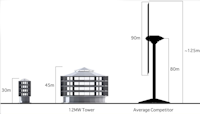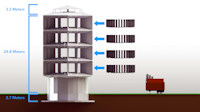Providing a path to sustainability
Protecting our environment and natual resources
Providing a path to sustainability
Protecting our environment and natual resources
It is the only sustainable resource we have to move into the future. We must conserve our natural resources
Learn MoreThe current technology uses the standard windmill type wind turbine but the old days are fading and the new more effient style is on it's way to the forefront
These new wind generators are more efficient less obtrusive to the landscape and can produce electricity at much lower wind speeds. They are less harmful to wildlife and provide interior space to do a multitude of things. Learn More>>>



The tremendous growth in the U.S. solar industry is helping to pave the way to a cleaner, more sustainable energy future. Over the past few years, the cost of a solar energy system has dropped significantly -- helping to give more American families and business access to affordable, clean energy.
Solar energy is the most abundant energy resource on earth -- 173,000 terawatts of solar energy strikes the Earth continuously. That's more than 10,000 times the world's total energy use.
At TJD Web Solutions we use a new form of solar panel that is ten times more efficient. This along with solar towers and not large arrays of panels allows for more energy production in smaller areas.
People have a long history of using the force of water flowing in streams and rivers to produce mechanical energy. Hydropower was one of the first sources of energy used for electricity generation and is the largest single renewable energy source for electricity generation in the United States.
In 2018, hydroelectricity accounted for about 7% of total U.S. utility-scale electricity generation and 41% of total utility-scale electricity generation from renewable energy sources. Hydroelectricity’s share of total U.S. electricity generation has decreased over time, mainly because electricity generation from other sources has increased.
We must be careful when we begin to expand our use of hydrpower because the greenhouse gasses emitted by the decaying vegetation under the water can be higher then fossil fuel greenhouse gases.
Geothermal power plants use hydrothermal resources that have both water (hydro) and heat (thermal). Geothermal power plants require high-temperature (300°F to 700°F) hydrothermal resources that come from either dry steam wells or from hot water wells. People use these resources by drilling wells into the earth and then piping steam or hot water to the surface. The hot water or steam powers a turbine that generates electricity. Some geothermal wells are as much as two miles deep.
Concentrated solar power (CSP) technology varies from one plant to another, but the basic principles remain the same – and the ability of these sites to retain heat and produce energy outside daylight hours means that they can be deployed in conjunction with photovoltaic (PV) modules to provide a more steady electricity supply. In markets such as Chile, hybrid CSP and PV plants are already under development.
Concentrating solar energy is not a new concept—in fact it goes back at least 2300 hundred years when the ancient Greeks used mirrors to concentrate the sun’s rays. Today there are four types of CSP technology: Parabolic trough and linear Fresnel systems focus sunlight onto a linear receiver. And dish/engine and power tower both focus sunlight to a point. All of these technologies involve converting sunlight into thermal energy for use in a heat-driven engine. A single CSP plant can generate enough power for 100,000 homes or more, making it a serious player of the utility-scale energy market.
In a much needed re-invention of wind turbines, Vortex Bladeless Wind Turbine has introduced a concept that has definitely made waves in the energy industry. Its unique bladeless turbine concept has been hailed as a technological leap forward and a resolution in the generation of wind power
The official description of Vortex Bladeless’ product is quite a mouthful: a vortex induced vibration resonant wind generator. It is a way of generating energy using a vorticity phenomenon called Vortex Shedding. In layman’s terms, this is the generation of energy from the spinning motion of air. This basic principle uses cylindrical turbines, which will allow for the development of a spinning whirlpool or vortex when wind passes through it.
The largest advantage in comparison to other forms of wind energy would have to be its reduced costs: it requires no gears, bearings or other expensive parts that could easily break and need expensive replacement. Simultaneously, it does not require any oil or intensive maintenance. In fact, costs for manufacturing, operating and maintaining the Vortex will be way down.
Got an idea or concept you would like to move forward on then use our Get Involved Form and get started
Send us a messageIt has come to our attention that the U.S. has fallen behind Europe in embracing Alternative energy. This is sad since we are the largest consumer of energy
Green Energy Used vs. Fossil Fuel
Capacity Available
Green Contribution as a % of our business
Organics Business %
Green Energy as a % of our business
Green technology as a % of our business